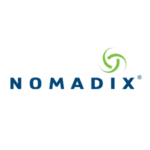 It probably goes without saying, but the pandemic hasn’t been kind to players in the tourism industry. And unfortunately, they’re not quite out of the woods yet — even with promising vaccine rollouts and declines in case numbers.
It probably goes without saying, but the pandemic hasn’t been kind to players in the tourism industry. And unfortunately, they’re not quite out of the woods yet — even with promising vaccine rollouts and declines in case numbers.
Thanks to the proliferation of virtual work, many employees are still forgoing the business trips they indulged in before the pandemic — a significant driver of the travel and hospitality industries. As a result, The Wall Street Journal reported in February that business flights might decrease by more than one-third. But hotels shouldn’t activate their emergency plans just yet. As fast as general business travel is sinking, bleisure travel (i.e., travel that combines business and leisure) might actually be on the rise.
Bleisure isn’t a new phenomenon in travel industry trends. Put simply, bleisure happens when people on work trips extend their stays, turning the experience into an opportunity for a vacation. Traditionally, bleisure benefits include getting free airfare (since the company pays for any jet-setting) and spending more time in an often-frequented destination. Yet in the era of post-COVID, bleisure holds a bigger advantage: It’s an opportunity to embrace work-life balance and better health.
Fusing business travel and health concerns
Prioritizing wellness has become incredibly important to most consumers after a year of wearing masks, social distancing, and lockdowns. That means when they start to hit the road again — even if it’s for their job — they’re going to look for ways to blend travel and wellness. In other words, they’ll naturally gravitate toward wellness-focused hotels.
Because the old rulebook no longer exists, this is an exciting moment for leaders in the hospitality industry willing to pivot. Everyone has the chance to disrupt. I predict a lot of hotels will ramp up their customer service and incentives to woo travelers and prove their properties are prioritizing guests’ needs. I’d suggest that hotels also begin to elevate their focus on wellness.
To be honest, I’ve been pitching this shift toward wellness for years. When I met the CEO of a major hotel chain, I urged him to create a wellness suite that included hypoallergenic furnishings, amenities, and fabrics. Today, I would probably take that idea a step further by recommending rooms outfitted with infrared technology. What better way could a hotel prove it was committed to generating a truly healthy environment designed for pure pampering?
If you’re eager to attract the bleisure travel market in a big way over the coming year, consider implementing these strategies at your hotel:
1. Adopt some sanitation methods from other travel industry players.
Travelers expect that the hotels they choose will go above and beyond to keep them protected. Beyond maintaining pristine common areas and private rooms, try adding other obvious yet nonintrusive sanitization protocols. For instance, you might want to offer to spray aerosol disinfectant on guests’ baggage. Some airports have started to do this, while others are installing UV sanitizing stations to achieve the same effect.
2. Switch to wellness-enhancing high-performance textiles.
Towels. Curtains. Sheets. Bathrobes. Upholstered furniture. Any textile can attract bacteria — or help lessen the likelihood of pathogen spread. Plenty of textiles have antimicrobial, antiviral, or antibacterial properties. By replacing your current textiles with these sustainable choices — and emphasizing responsive fabrics that rely on bioceramic and infrared technology to react to the body’s signals — you can court bleisure travelers who want an easy road to wellness.
3. Ensure you have a wellness-certified building.
If you have one, have you taken steps toward being able to showcase your WELL Health-Safety seal? The WELL Building Standard was created to help visitors to any building know instantly if the building took their wellness in mind from environmental, aesthetic, design, and management perspectives. In addition to emphasizing or obtaining WELL certification, find out whether your hotel could also become LEED- or Green-certified. Be certain to advertise any of these credentials to ensure potential guests see your facility as a leader in health and wellness travel.
Our nation has become interested in staying healthy beyond simply visiting gyms and shoring up diets. Your hotel can use this newfound hospitality industry trend as inspiration to add amenities and processes that appeal to bleisure adventurers as well as vacationers who just want to feel confident about where they lay their heads — and laptops.
About the author
Seth Casden is the CEO and co-founder of Hologenix, a materials science company dedicated to developing products that amplify human potential and improve health and wellness. Celliant®, its flagship product, is a responsive textile using infrared technology.


















